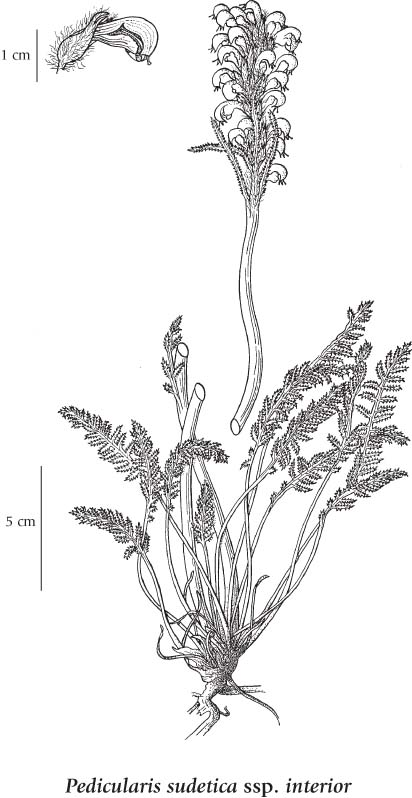Pedicularis sudetica : Sudeten Lousewort
Taxonomy | Description | Biology | Ecology | Uses | Images | Range Maps
Taxonomy |
Scientific Name:Kingdom: Plantae Division:
Class: Dicoteldonae (two seed-leaves) Family: Scrophulariaceae (Figwort Family) Genera: Pedicularis (Lousewort, Fernweed) (Lat. pediculus = a louse; animals who ate these plants were said to be protected from lice.) Species: sudetica (of the Sudetes, a mountain range of east-central Europe) Synonym(s): P. sudetica ssp. interior / albolabiata / pacifica English Name(s):Sudeten Lousewort, Sudetic/Swedish Fernweed, Purple Rattle First Nation Names:
|
Description |
Structure:
Leaves:
Reproductive Parts:
Seed:
Not to Be Confused With:
|
Biology |
Physiology:
Life Cycle:
Seasonal Cycle:
|
Ecology |
Animal Uses:
Habitat:
|
Images |
|
Plant in bloom Flowers two coloured. pink/purple to white Illustration from: Illustrated flora of BC |
Range Maps |
|
World Range: Circumpolar, arctic-alpine; in N.A. from NU to AK, south to James Bay and BC.
In Yukon: Found throughout much of the Yukon Territory |




